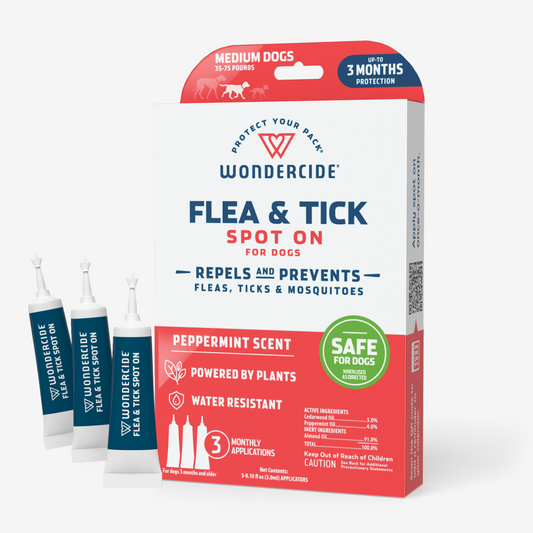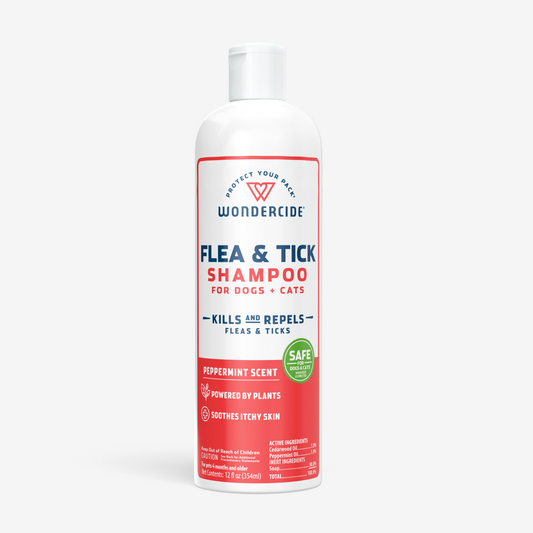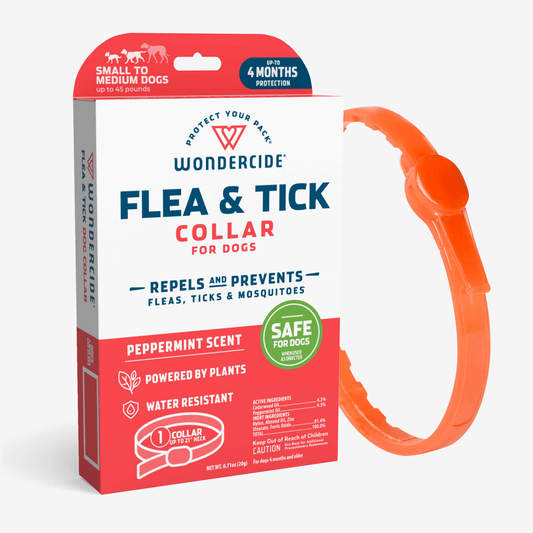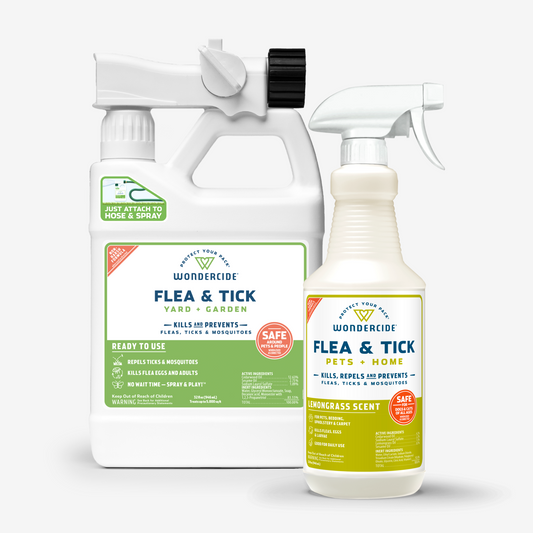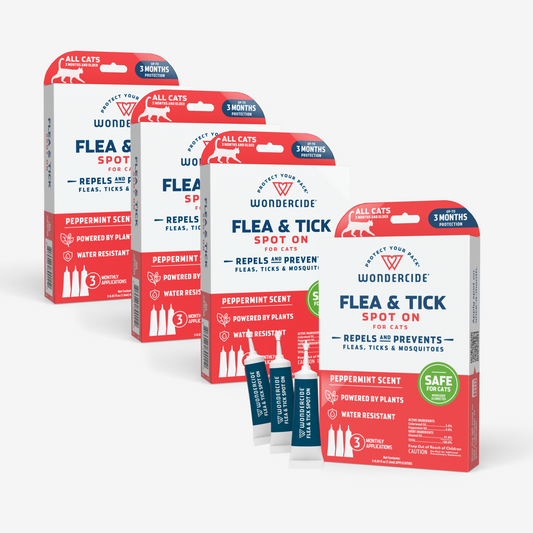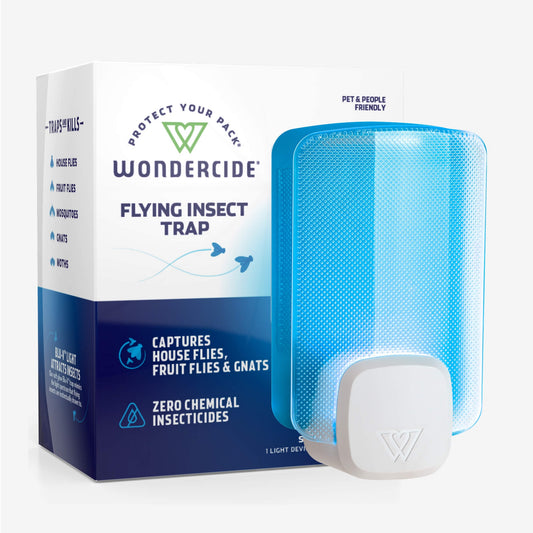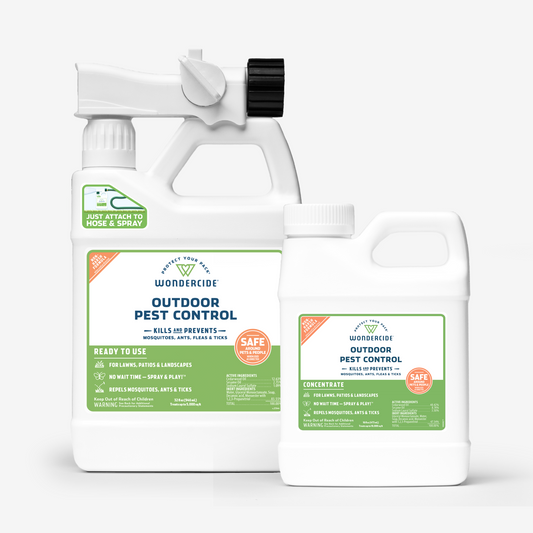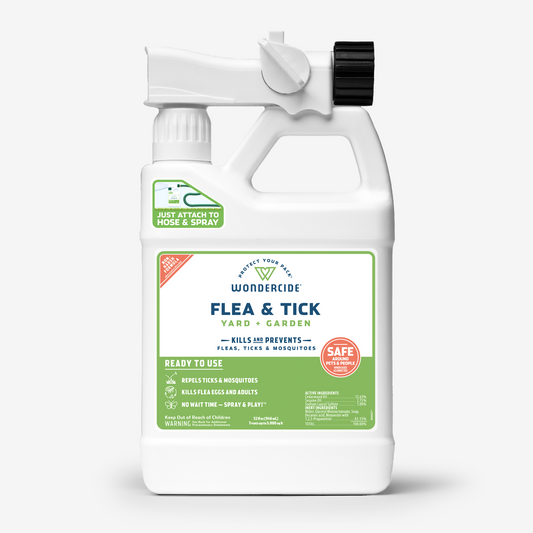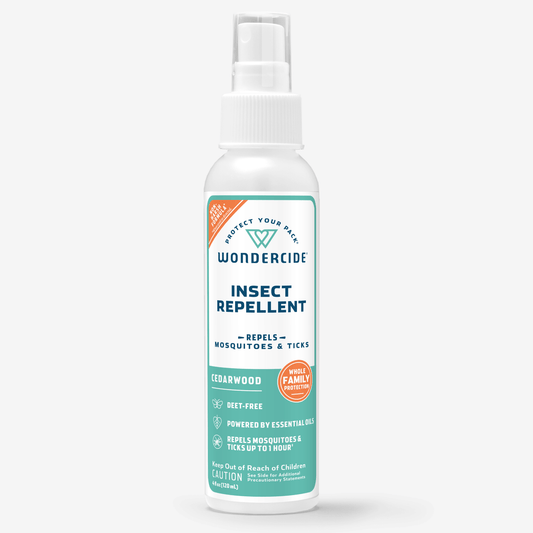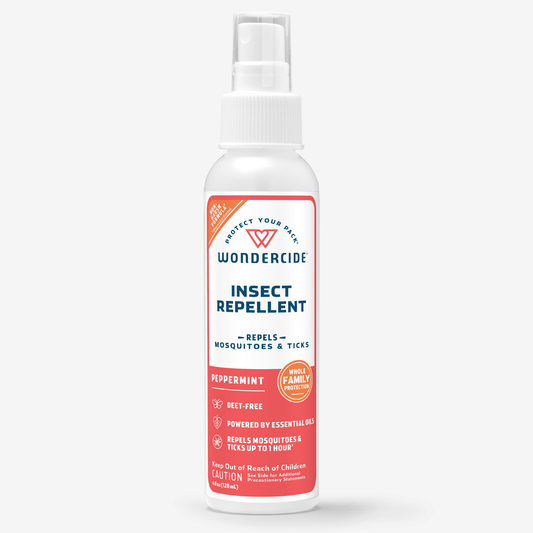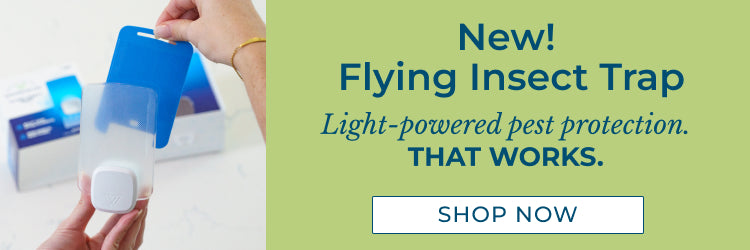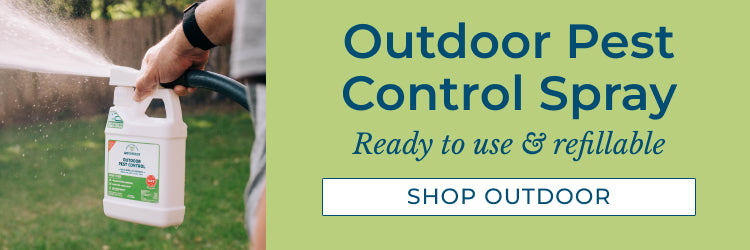Knowing how to get rid of ticks is especially important if you love the great outdoors or visit wooded areas. These pests may be small, but they can cause big problems for their hosts. Read on for a crash course on how to get rid of ticks on your dog and cat, as well as in your home and yard.
Get rid of ticks without conventional ingredients
What are ticks?
Ticks are parasitic arachnids that can be gray, white, brown, black, or even yellow. They have flat, oval-shaped, wingless bodies that can vary in size from 1 mm to 1 cm, depending on their age and whether they have recently had a meal, which causes them to swell up.
There are many species of ticks: deer ticks, American dog ticks, and lone star ticks are just a few varieties that are common in the United States. Different species of ticks have their own preferred hosts. Most prefer animals to humans, but ticks will gladly feast on whatever blood is available to them.
While ticks cannot fly or jump, they can hitch a ride on mammals by climbing up on vegetation and waiting to latch onto clothes, skin or fur—a process called questing. If they are not removed, ticks can cling to their hosts for 3-10 days before falling off.
How to get rid of ticks on your body
You don’t have to be deep in the woods to get a tick on your body. You can get them while hiking and camping but you can also get them by simply walking your dog in your neighborhood or sitting in your own backyard. Here are some ways to prevent ticks from hitching a ride on you.
- Use a topical repellent like Wondercide’s Insect Repellent for Family on your skin before going outside.
- Wear long sleeves and long leggings or pants when you are spending the day outdoors. Tuck your shirt into your pants and your pants into you r boots. Wear a hat to protect your head. Light colored clothes will help you stay cool and spot ticks more easily.
- Avoid areas with lots of brush or high grass while hiking or camping. Stay in the middle of trails. Remember: ticks cannot jump or fly. If they land on you, it will be because you brushed against them.
- Immediately take a shower when you come inside. Showering within two hours of tick exposure can dramatically reduce your chances of tick-borne illness. Ticks often take several hours to latch onto you, and water will wash even the tiniest ones off.
- Inspect your skin for ticks after spending time in nature. Look under your arms, behind your knees, between your legs, inside your belly button, around your ears, around your waist, and on your scalp. Check your children and your pets, as well.
- Put your clothes and gear in the dryer for 10-15 minutes on high heat. If you need to wash your clothes after coming inside, use hot water. Heat can kill any ticks or tick eggs that have hitched a ride inside.
How to get rid of ticks on your pets
If you’re looking for tips for how to get rid of ticks on dogs or how to get rid of ticks on cats:
- Start by inspect your pet for ticks when they come inside, especially in the warmer months when ticks are most active.
- Run your fingers through their fur, feeling for small, hard bumps.
- If you find a tick, follow the CDC guidelines for tick removal.
The Global Lyme Alliance recommends placing the tick in a zippered plastic bag or sealed container with a moist cotton ball or paper towel inside, then sending it to your local health department or a lab to identify the tick and test for Lyme as well as other tick-borne diseases. If you don’t want to send it in, wrap the tick tightly in tape before throwing it into the garbage.
Instead of conventional topical or oral prescription medications, consider these lab proven, plant-powered solutions for your pet.
- Flea & Tick sprays: Some essential oils like cedarwood are natural tick repellents. Wondercide’s Flea & Tick Spray for Pets + Home is powered by cedarwood and other essential oils kill and repel adult ticks and kill tick nymphs.
- Pet shampoos: If your dog or cat loves baths, try Wondercide’s Flea & Tick Shampoo. It’s plant powered and proven to kill and help repel ticks on pets that are more than four months old. Giving your pet a bath after a long day outside is also a great way to sneak in a tick check!
- Tick collars: Wondercide’s peppermint-scented Flea & Tick Collars are an alternative to conventional collar and repel ticks for up to four months. Collars are a convenient choice for pets over four months old.
- Spot on: Also in a fresh peppermint scent are Wondercide’s Spot On products for cats and dogs three+ months. Tubes are available in multiple sizes for dogs and one size for cats.
How to get rid of ticks in your yard
How do I know if my yard has ticks?
Unfortunately, most people first learn they have a tick problem in their yard when they find a tick on themselves, their child, or their pet. Ticks can bite at any time, but they tend to be most active during the warm months (April-September).
You can confirm that you have ticks by tick-dragging. Drag a clean, light-colored towel or sheet throughout your yard. Then take it to a grass-free area and inspect it. If you find a tick, destroy it by sealing it in a Ziploc bag or wrapping it tightly in tape and then throwing it away.
You can also use a flashlight to inspect moist, shaded areas that ticks favor: along walls, in brushy or grassy areas, in piles of yard debris, in trees or bushes, or in areas where your pets spend time.
Best practices for getting rid of ticks in your yard
To get rid of ticks in your yard, think like a tick! Ticks typically enter your yard by hitching a ride on a pet, a rodent, or larger mammal. Once there, they gravitate toward tall grass or brush, moist dirt, and hidden, shaded areas. Attack ticks by disrupting these patterns.
-
Use a lab proven yard spray powered by essential oils.
It’s tempting to call pest control as soon as you notice ticks on your property. However, consider the chemicals they use. For a plant-powered DIY solution that’s proven to exceed the same effectiveness standards as the conventional products, use Wondercide’s Flea & Tick Spray for Yard + Garden, which kills, repels, and prevents adult ticks. The residue is safe for pollinators like bees and butterflies and there’s no dry time required before pets and family enjoy the yard again.

- Research humane ways to keep rodents and deer off your property. Erecting a new fence or patching an existing one could help, as could noisemakers, lights, or motion-activated sprinklers.
- Keep bird feeders near the edge of your yard to discourage wildlife from breaking in to sneak some seed.
- Mow and weed your yard frequently. Reduce places where ticks can hide, like beneath shrubs and ground-cover plants. Expose as many dark areas to the sun as you possibly can.
- Don’t leave yard debris, firewood, leaves, old furniture or trash in your yard. Destroy any empty rodent or bird nests you find as well. Maintaining a tidy yard will make your space more inhospitable to ticks.
- Keep play equipment, yard furniture, patios and decks at least 8 feet from your lawn’s edge, especially if you live near a wooded area where ticks thrive.
- Create a 3-foot barrier of gravel or cedar chips between your yard and wooded areas. These natural barriers will allow you to continue enjoying your view while keeping ticks at bay. Ticks hate the smell of cedar, but it’s safe and pleasant for you and your pets.
- Sprinkle food grade diatomaceous earth (DE) in outdoor areas ticks frequent. DE dehydrates and kills ticks and other pests. Just keep in mind that you’ll need to reapply DE after rain, and that it can cause skin irritation and dryness and should not be inhaled.
- Plant tick-repellent plants. This is an especially good trick to use in borders, around patios or decks, and near windows. Just make sure to check that the plants you chose are not toxic to your pets and will survive in your local climate.
How to get rid of ticks in your house
Most well-constructed homes are not vulnerable to ticks because ticks prefer to live and reproduce outside in moist soil. However, cabins and poorly constructed or maintained homes with lots of entry points may be at risk, especially if they are in rural areas. Sheds, dog-houses and treehouses could also harbor ticks, especially in warm and muggy climates.
If ticks do lay their eggs inside, they’ll likely do so in cracks in your molding or baseboards, on the edges of carpets or curtains, or in other out-of-the-way, dark areas where they are unlikely to be noticed.
Vacuum these areas regularly,preferably with a vacuum that allows you to dispose of the bag without opening it. If you find a tick, resist the urge to squish it! Flush it, bag it, or wrap it in tape instead.
To discourage ticks in your home, you can use a spray repellent spray like Wondercide’s Flea & Tick Pets + Home, which kills, repels and prevents ticks with the power of plants.
Additional things to consider when getting rid of ticks
Best practices for tick removal
There’s lots of old-fashioned advice about how to remove a tick that has latched onto you or a pet: nail polish, vaseline, matches, even gasoline. DO NOT use these methods!
Instead, follow the CDC’s guidelines and use fine tipped tweezers or a tick removal tool to carefully grasp the tick as close to the skin as possible and pull it straight out. Do not squeeze the tick and be sure to remove the entire tick. Remove any pieces that are left behind carefully. Then clean the bite area with rubbing alcohol or soap and water.
If you have reason to believe that a tick has been attached for more than 24 hours, or if you develop a rash or begin experiencing flu-like symptoms, seek prompt medical attention.
The tick life cycle
A tick’s life is all about quests and transformations. Their journey through life might be epic, but you’ll want to steer clear of them no matter what. Once they’ve hatched, ticks can bite at any stage in their life cycle.
- Eggs: A well-fed female tick can lay thousands of eggs before her death. She’ll usually do this in a dark, sheltered area with moist soil, but any out-of-the-way, dark place will do in a pinch.
- Larvae: When ticks hatch from their eggs, they are about the size of a grain of sand. Ticks will remain in the larval state until they have their first blood meal. At that point, they’ll shed their skin and become nymphs.
- Nymphs: Tick nymphs are a bit larger than larvae. During the molting process, they also sprout an extra two legs. They too must have a blood meal before molting and moving onto their next life stage. Tick nymphs do bite humans, though they tend to cause more issues for smaller mammals like rodents.
- Adults: In their last life stage, ticks will go on a third quest. Once they have had their meal, they mate and then drop off their host. After this, female ticks lay their eggs and soon die. The whole life cycle of a tick can take up to three years, though many ticks never make it to the adult stage.
How long does it take to get rid of ticks?
Ticks typically can’t live in a house for more than a few days. However, ticks can survive and thrive in your yard, especially if you live in or adjacent to a wooded area with lots of wildlife.
If ticks are prevalent where you live or recreate, attack them from all angles. Treating your yard, home, and pets for ticks early and often and practicing tick safety protocols when you’re spending time outside can help you say goodbye to ticks for good.
Get rid of ticks without the use of conventional ingredients
Shop bundles and save! Wondercide’s Complete Control Flea & Tick Kit, Home Treatment Kit, Flea & Tick 360 Bundle, and Pest-Free Pack are all great ways to protect your family and keep more money in your wallet.
More Wondercide How-To Guides:



